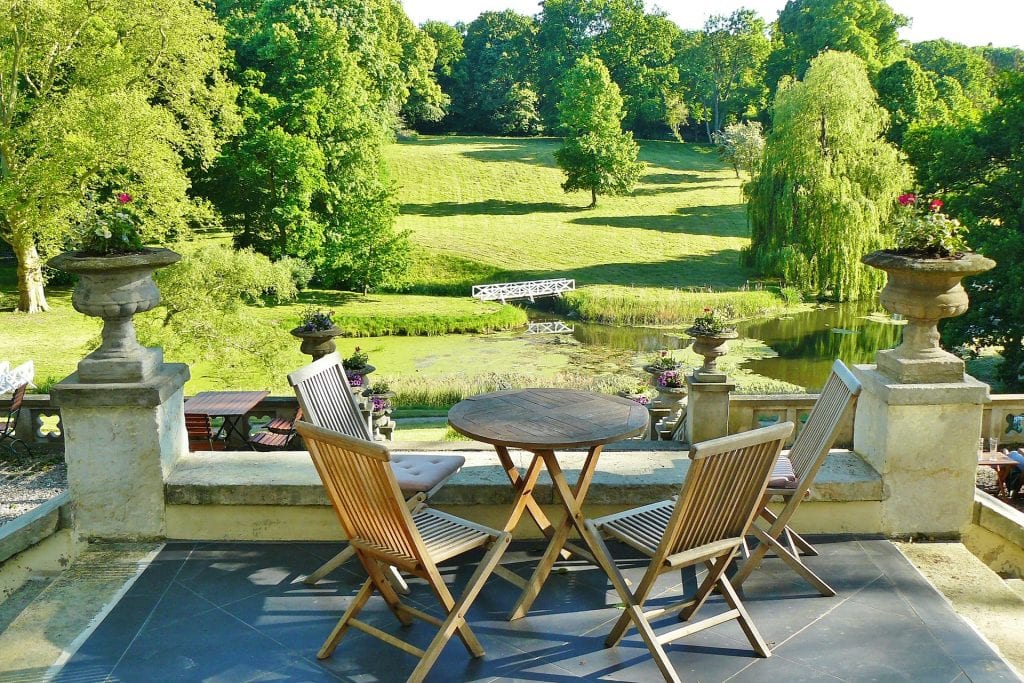Patios 101
One of the fastest and least expensive ways to expand your living space is to add outdoor space. Although you can’t use it year round, it can become your family’s favorite place to gather in the warmer months. Patios can create intimate spaces that are good for evening conversations over a warm fire, or capacious gathering places that are great for large, memory-making parties. Spring is upon us so we will be posting some basics about patios over the next few weeks. Check back often to learn more!
What’s the difference between a patio and a deck?
The main differences are their height and the materials they are made of. Patios are directly on the ground (meaning they can be made of brick, stone, concrete or gravel), and decks are off the ground at least an inch (meaning they are usually made of some sort of wood or composite material).
How much does a patio cost?
As you know, that is a little like asking how much a car costs (the obvious answer being “how much do you want to spend?”), but there are still some rules of thumb that can help guide your decision process. The good news is that there is a patio for almost every budget. As with any space-making decision, there are strengths and limitations to each decision.
$ Gravel is definitely the least expensive way to go. This can play out in a variety of ways. Either a small pea gravel is used as the primary surface, or it is used to surround large stones or pavers. This could run from $1-5 per square foot. The advantage is that it is easy to install, and allows water to run right through and into the ground below so there is no puddling. The disadvantages are that it can’t be swept or kept as a clean surface, and that many types of furniture won’t be able to be set on it in a stable manner. This might be a great option for paths between areas or as a transitional surface to signal a change of function.
$$ Concrete is a great option that is very flexible. Because it can be used in a variety of ways, the cost can vary greatly from $6-15+ psf. Concrete can be formed into any shape, which makes it a great option if the patio will be curved or have a complex irregular pattern. It can also be stamped, which allows you to make it look like almost anything, from cobblestones to slate. It can be stained, which allows you to create a wide variety of colors, or even a combination of colors. Another great way to affect the look is by cutting a pattern into the concrete. One of our most popular looks is a slate stamp with a bricklay pattern (2’x4’ shapes) cut into it.
$$$ Pavers usually require a little more preparation than a standard concrete patio, so the price range usually lies a little higher–between $8-20+ depending on the pavers that are chosen. One of the reason there is such a large swing in budget is because there are so many different types of pavers to choose from. They can be grouped into three basic types: pre-cast concrete, brick and composite. These can be used in a variety of ways and create many different looks, from a cottage-y stone to a very formal herringbone brick. They can be as small as 4”x4”, or as large as 18”x24”. In this area of the country, it is probably better to use a design that does not require a mortared joint. One of the more exciting developments of the last few years is the use of composite pavers. These are frequently made of recycled tires or some other earth-friendly product. They are usually lighter weight, but can be just as durable.
$$$$ Natural stone is still the king when it comes to patios. It is very labor intensive, and should only be installed by someone who is very knowledgeable. The budget can range from $12-24 psf. There are still a lot of options in natural stone. The softer stone (like limestone or sandstone) may not be the best option for this area because it doesn’t handle the freeze-thaw cycle as well–unless it is covered. The harder stone (like bluestone or granite) does much better in resisting this climate.

